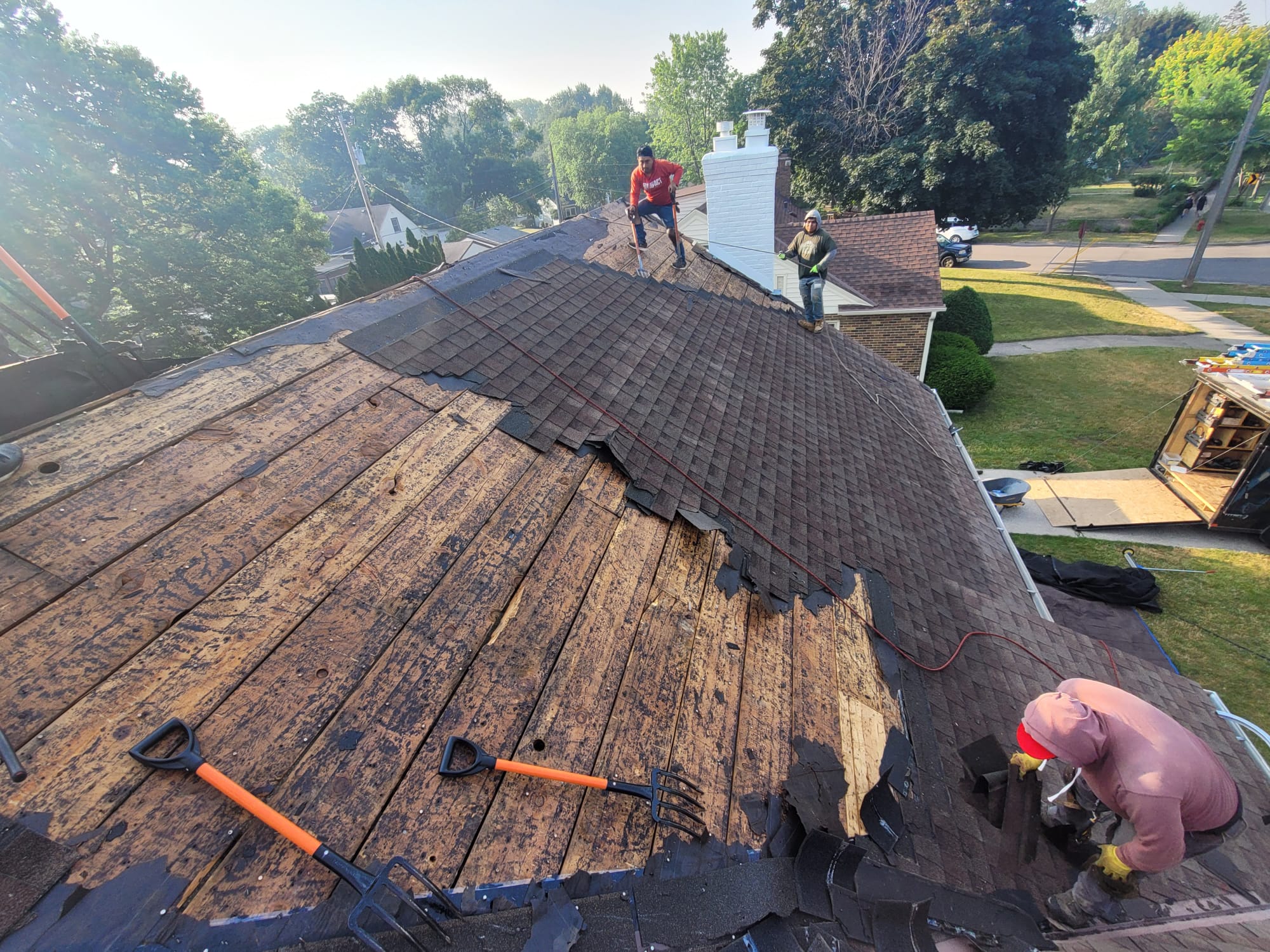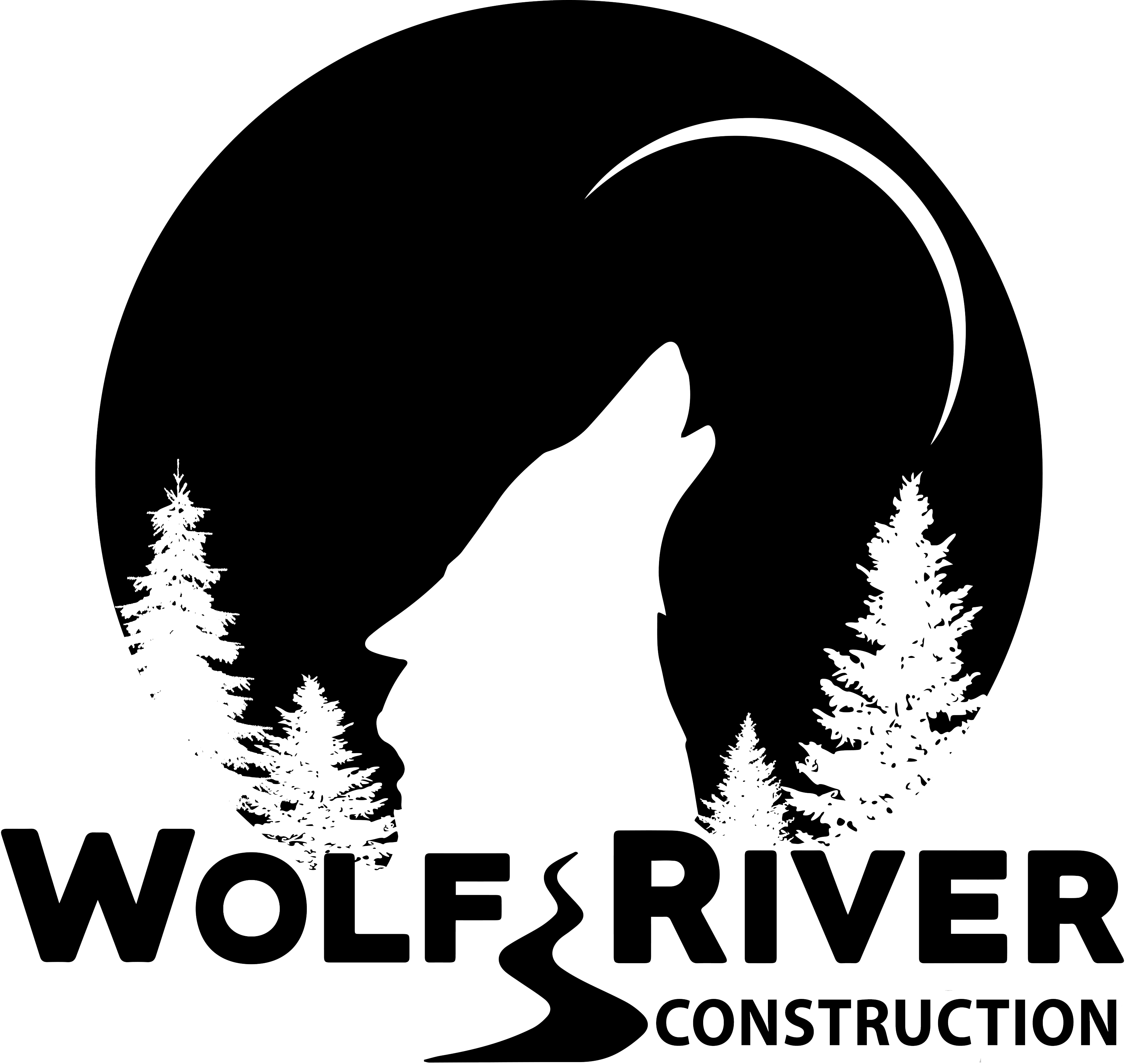How Often Does A Roof Need To Be Replaced
Replacing the roof of a home is no small undertaking. Not only does it require a sizable investment, but it also requires planning and understanding how often that type of maintenance is necessary.
Sure, there are certain circumstances in which a homeowner can anticipate when they will need to replace their roof, such as after significant weather damage or if their warranty on an otherwise properly maintained roof has expired.
But for those who don’t know much about roofs or aren’t sure what to expect from theirs over time, wondering how often you should invest in replacing your roof can be daunting and intimidating. That’s where Wolf River Construction comes in! We have put together this guide for homeowners to learn more about determining when and why they may need to replace their roofs.
Average Lifespan Of Different Types Of Roof

Asphalt Shingles
Asphalt shingles are one of the most common and affordable roofing materials used in residential construction. The average lifespan of asphalt shingles ranges from 15 to 30 years, depending on the quality and type of shingles.
Traditional 3-tab asphalt shingles tend to have a shorter lifespan of around 15 to 20 years, while architectural or laminated asphalt shingles can last up to 25 to 30 years.
Clay/Cement Tile Roofing
Clay and cement tile roofing are popular for their durability and aesthetic appeal. These tiles are known for their ability to withstand harsh weather conditions, including high winds and extreme temperatures.
The average lifespan of clay or cement tile roofing ranges from 50 to 100 years or even more with proper care. The longevity of tile roofs can be attributed to their resistance to rot, insects, and fire. However, it’s essential to note that the roof’s structural integrity and proper installation play a significant role in determining its lifespan.
Slate Roofing
Slate roofing is renowned for its elegance and remarkable longevity. Made from natural stone, slate roofs can last for over 100 years when installed and maintained correctly. The durable nature of this typical roof makes it highly resistant to fire, moisture, and pests.
Besides, slate tiles require minimal maintenance, contributing to their extended lifespan. While slate roofing offers unmatched durability, it’s essential to consider the added weight on the roof’s structure, and professional installation is crucial to ensure its longevity.
Wood Shingles
Wood shingles are a classic roofing choice that provides a rustic and charming aesthetic. The average lifespan of wood shingles is around 20 to 30 years. However, their longevity can be influenced by climate conditions and regular maintenance.
Wood shingles are susceptible to rot, mold, and insect damage, especially in humid or rainy environments. Proper roof ventilation and periodic treatments, such as preservatives or fire-retardant coatings, can help prolong the lifespan of wood shingle roofs.
Wood Shakes
Similar to wood shingles, wood shakes are cut from logs, providing a more textured and rustic appearance. The average lifespan of wood shakes ranges from 20 to 40 years, depending on the type of wood and climate.
Proper installation, periodic maintenance, and treatments to protect against weathering and decay are essential to extend the life of wood shake roofs. Adequate roof ventilation is also crucial to prevent moisture buildup, which can accelerate deterioration.
Metal Roofs
Metal roofs have become increasingly popular due to their durability and energy efficiency. The average lifespan of a metal roof varies between 40 to 70 years, depending on the type of metal used and the coating applied.
Aluminum, steel, zinc, and copper are common metals used in roofing. Metal roofs are resistant to fire, mildew, insects, and rot, making them a low-maintenance option. Metal roofs are recyclable, making them an environmentally friendly choice.
Factors Affecting A Roof’s Lifespan

Weather
Exposure to harsh elements, such as heavy rain, snow, hail, and wind, can lead to accelerated wear and tear. Prolonged exposure to moisture can cause rot and deterioration in certain roofing materials like wood and asphalt shingles.
Also, extreme temperature fluctuations can cause expansion and contraction of roofing materials, leading to cracks and damage over time.
Climate
In areas with high humidity, roofs are more susceptible to mold, algae, and rot, particularly for organic materials like wood. On the other hand, regions with intense UV radiation can cause premature degradation of roofing materials, leading to cracking, fading, and reduced overall lifespan.
Amount & Intensity of Sunlight
Roofs exposed to prolonged periods of direct sunlight can experience faster deterioration, especially for materials that are susceptible to UV damage, such as asphalt shingles. UV radiation can cause the surface of the roof to become brittle, leading to cracking and reduced waterproofing capabilities.
Slope of Roof
The slope or pitch of a roof can affect how water and debris are drained off the roof’s surface. Roofs with steeper slopes generally shed water and snow more effectively, reducing the likelihood of water pooling and ice dams.
Proper water drainage is essential to prevent water from seeping under roofing materials and causing leaks or water damage, which can significantly impact the roof’s lifespan.
Poor Installation
Improper installation can lead to various issues, such as improper sealing, inadequate ventilation, and misaligned roofing materials. These installation errors can compromise the roof’s ability to withstand weather conditions and lead to premature aging and damage.
Maintenance
Neglecting maintenance tasks, such as cleaning the gutter, checking for damaged shingles, and promptly addressing small repairs, can lead to more significant problems over time. Therefore, proper maintenance helps identify and fix minor issues before they escalate, ultimately preserving the roof’s integrity and maximizing its lifespan.
Roofing Material
Different materials, such as asphalt roof, clay tiles, metal, and wood shakes, have varying durability and resistance to weather conditions. Choose the right roofing material for the specific climate and environmental factors to ensure a long-lasting and robust roof.
Signs You Need To Roof Replacement

Damage from Severe Weather Conditions
Severe weather events like hailstorms, hurricanes, or heavy snowfall can cause significant damage to your roof. Look for signs of cracked or broken shingles, dents, or punctures in metal roofing.
If left unrepaired, such damage can lead to leaks and compromise the roof’s structural integrity, necessitating a roof replacement to ensure your home remains protected from future weather-related issues.
Multiple Repairs due to Leaks
Frequent leaks and the need for constant repairs are strong indicators that your roof may require replacement. Persistent leaks, even after repairs, could suggest widespread damage or deterioration that extends beyond the surface.
Repeated repair costs may become financially impractical, making a roof replacement a more cost-effective and long-term solution.
Sagging or Collapsing Roof
A sagging or drooping roof is a severe structural issue that requires immediate attention. It could indicate rotting roof decking or compromised supports. A sagging roof poses a significant safety risk and should be addressed promptly. In such cases, a roof replacement is essential to ensure the structural integrity and safety of your home.
Sunlight through Roof Boards
If you can see sunlight streaming through your roof boards from inside the attic or living space, it’s a clear sign of roof damage. This could be due to missing shingles, cracked roof tiles, or deteriorated roofing materials.
Sunlight penetration indicates compromised roofing, and a roof replacement is necessary to restore the roof’s weatherproofing.
Shingle Granules in Gutters
Granule loss is common in aging asphalt shingle roofing, which protect against UV rays and weathering. As shingles lose granules, they become less effective in shielding your roof from the elements. If you notice significant granule loss, it may be time for a roof replacement to avoid further deterioration.
Curling or Buckling Shingles
Curling or buckling shingles are typically a result of moisture absorption or improper installation. When shingles no longer lay flat against the roof surface, they lose their ability to protect against water infiltration.
Curling shingles are more prone to wind damage and leaks. If a large portion of your roof has curling or buckling shingles, a roof replacement is advisable.
Tips To Extend The Life Of Your Roof
Conduct routine roof inspections to identify and address minor issues before they escalate, ensuring the roof remains in good condition.
Clean gutters and downspouts regularly to prevent water buildup and potential water damage to the roof and its underlying structure.
Trim tree branches that hang over the roof to prevent them from falling during storms and causing damage to the roof.
Proper attic ventilation prevents heat and moisture buildup, which can otherwise damage the roof’s underlayment and reduce its lifespan.
Fix any roof leaks as soon as they are detected to prevent water from seeping into the roof structure and causing further damage.
Invest in high-quality roofing materials and hire experienced roofing contractors for installation to ensure a durable and long-lasting roof.
Let Us Asses And Replace Your Roof At Wolf River Construction

Wolf River Construction is an experienced team of roofing experts and we are here to assess and replace your roof in no time. From simple repairs to complex replacement projects, our job is to make sure your roof meets the highest standards and runs safely and efficiently without fail.
Don’t let your roof become a hazard; contact us today for all of your residential or commercial roofing options. Remember that the best time to replace your current roof is when it starts to show age, much like replacing the tires on our cars regularly. By doing so, you’ll ensure that weak spots don’t develop. If you need help with the repair or replacement of your current roof at any stage – don’t hesitate to contact Wolf River Construction.


